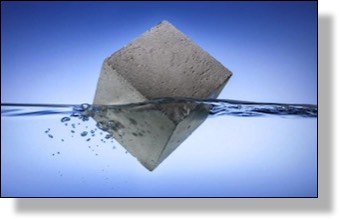What is Aircrete?

AIRCRETE 101
AirCrete is a lightweight cement based material that contains stable air cells uniformly distributed throughout the mixture. It utilizes a stable air cell rather than traditional aggregate. It is a minimum of 20% (per volume) foam entrained. It is also know as cellular concrete, foam concrete, foamcrete, light weight concrete, aerated concrete.
Aircrete is produced in industrial settings and commercially throughout the world. This process typically requires large, heavy, expensive, machinery to create the precise foam and incorporate the foam into the concrete. A few creative innovators, most notably Hajjar Gibran from Domegaia, worked to develop a simple, inexpensive, do-it-yourself method for creating aircrete. It can be made with small, readily available tools that makes the process more affordable and accessible. This process opens up a construction technique to a larger demographic who lack the resources or skill to build conventionally. It’s simply a faster, easier, cheaper and more sustainable building solution.
This website’s focus is on the process, development, improvements, experiments, benefits and challenges of the do-it-yourself version of lightweight air infused concrete called aircrete.
WHY IS DIY AIRCRETE SO INNOVATIVE:
DIY aircrete is easy to produce, low-cost and low maintenance. It’s doesn’t require skilled labor. It’s strong yet extremely lightweight. It’s environmentally friendly. It provides excellent thermal and acoustically insulation, taking less energy to heat and cool. It’s fire, mold, pest, termite proof and water resistant…unlike wood, adobe, cob, straw bale, compressed earth or metal buildings that can rot, rust and decompose in water . Aircrete is not harmed by water. (However, it is not impervious to it if not properly sealed)
Mix designs can be modified or adapted to meet project specifications or building needs. A refractory mix recipe can be made for areas that will be subjected to intense heat. Stronger, higher density mixes with added aggregates, basalt mesh/wire mesh can be made for structural purposes for foundations or larger panels. While lower density, lighter mix designs are suitable for non-load bearing structures or for thermal insulation.
Aircrete can be sawed, screwed, cut, carved, drilled or nailed and is easy to work with and repair with simple handheld tools. It can be pumped or poured into molds or forms.

Couple this building material of the future with the arched dome and you have a truly dynamic duo! The American Institute of Architects calls the dome “the strongest, lightest and most efficient means of enclosing space known to man.” Domes enclose the largest volume of interior space with the least amount of surface area, which saves on materials and cost. Additionally, a dome’s structure is one of the most efficient interior spaces because air circulates without obstruction. In the event of a natural or man-made disaster, domes meet or exceed FEMA’s standards for providing near-absolute protection. Dome homes are known to have survived wildfires, earthquakes, tornadoes, and hurricanes.

